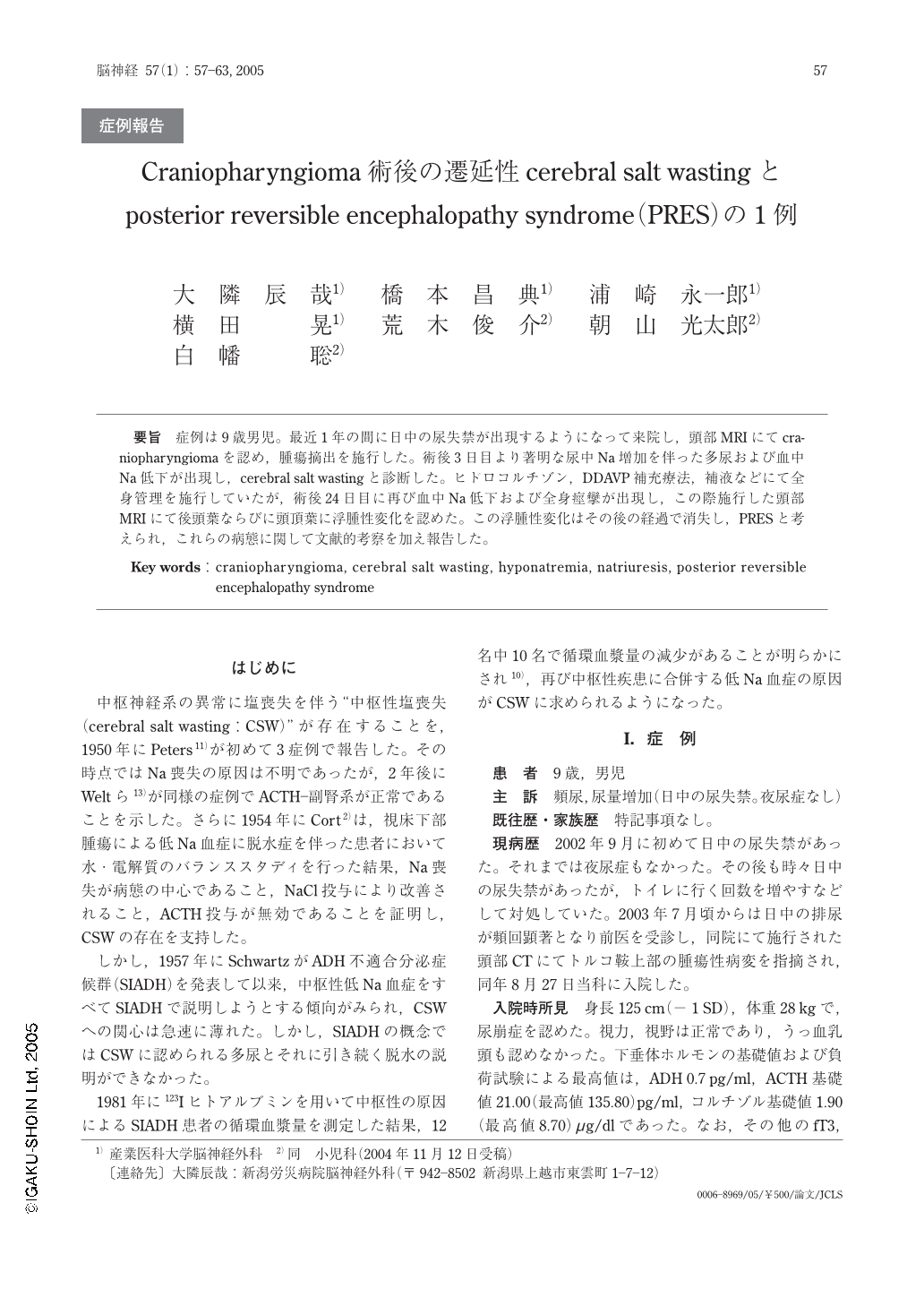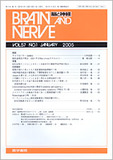Japanese
English
- 有料閲覧
- Abstract 文献概要
- 1ページ目 Look Inside
要旨 症例は9歳男児。最近1年の間に日中の尿失禁が出現するようになって来院し,頭部MRIにてcraniopharyngiomaを認め,腫瘍摘出を施行した。術後3日目より著明な尿中Na増加を伴った多尿および血中Na低下が出現し,cerebral salt wastingと診断した。ヒドロコルチゾン,DDAVP補充療法,補液などにて全身管理を施行していたが,術後24日目に再び血中Na低下および全身痙攣が出現し,この際施行した頭部MRIにて後頭葉ならびに頭頂葉に浮腫性変化を認めた。この浮腫性変化はその後の経過で消失し,PRESと考えられ,これらの病態に関して文献的考察を加え報告した。
A 9-year-old boy was admitted to our hospital with daytime urinary incontinence for the past one year. MRI showed craniopharyngioma occupying the third ventricle. The tumor was excised by interhemispheric approach. Because hyponatremia and polyuria with high renal loss of sodium were observed on postoperative day 3, hydrocortisone and DDAVP were replaced. On postoperative day 24, successive general convulsions and hyponatremia recurred, and MRI FLAIR imaging showed marked brain edema in the bilateral parieto-occipital lobes. This finding disappeared late in the course of treatment, and the case was diagnosed as posterior reversible encephalopathy syndrome. The pathophysiology of cerebral salt wasting and posterior reversible encephalopathy syndrome in a craniopharyngioma patient are also discussed in the article.
(Received : November 12, 2004)

Copyright © 2005, Igaku-Shoin Ltd. All rights reserved.


